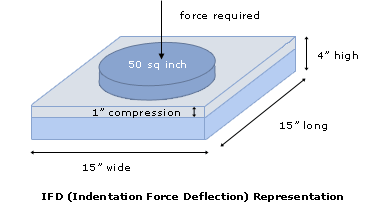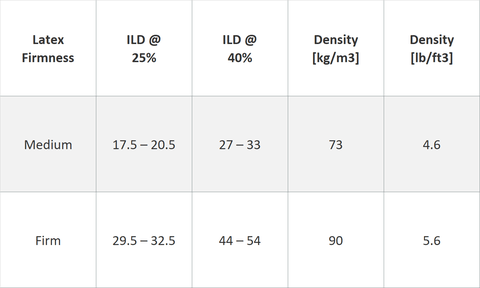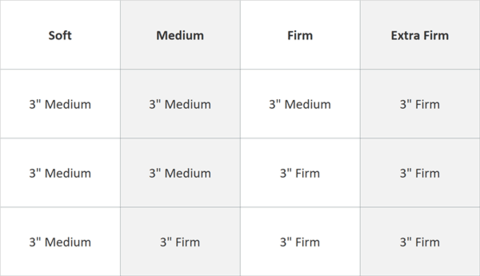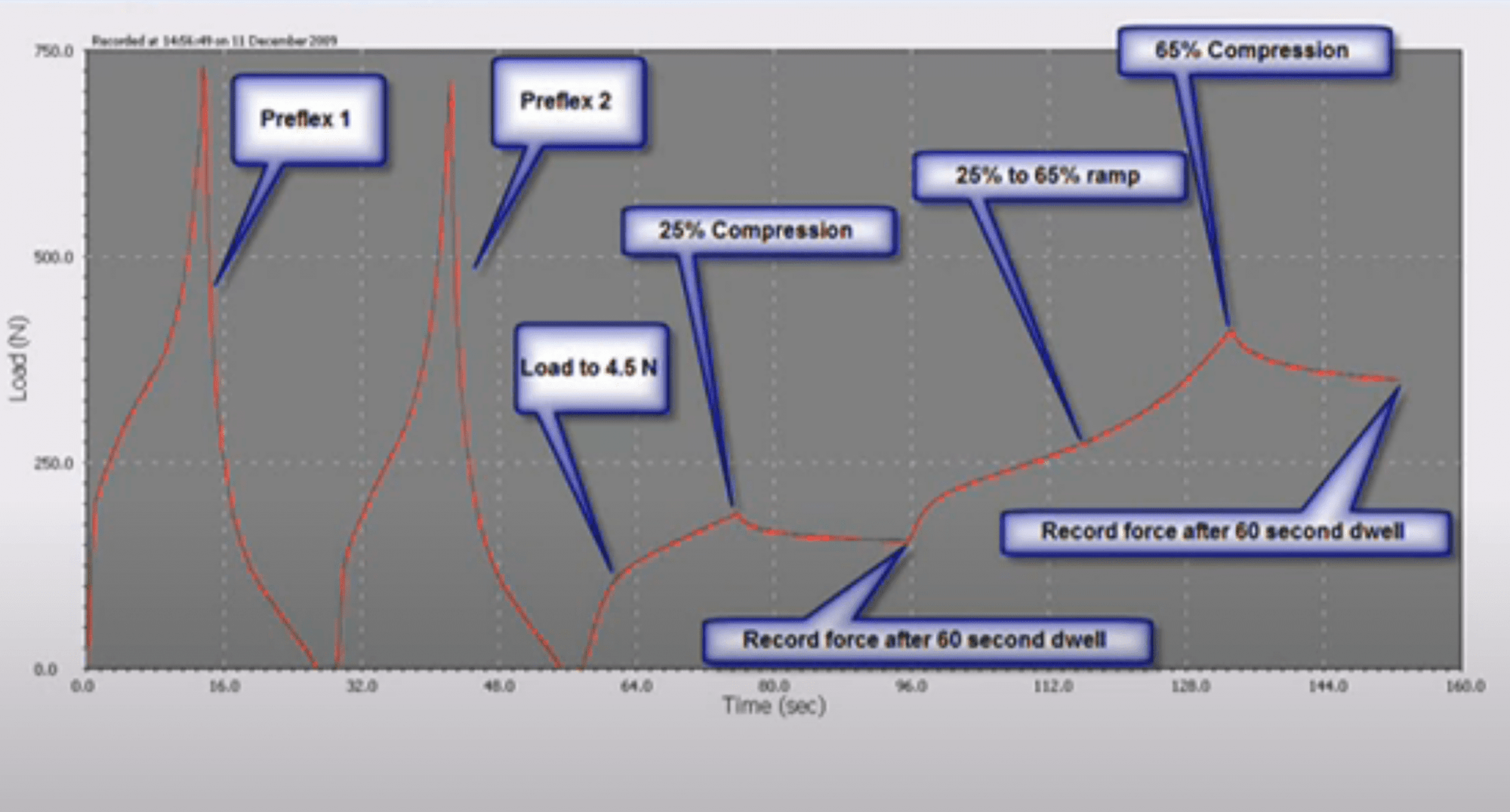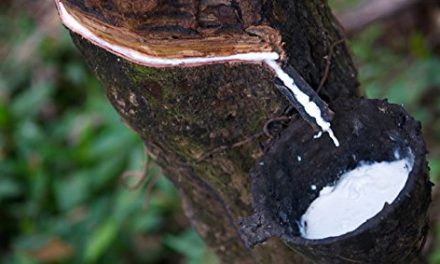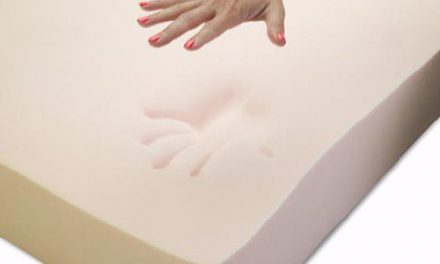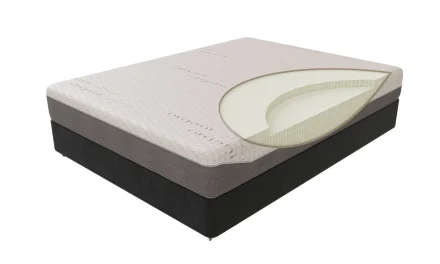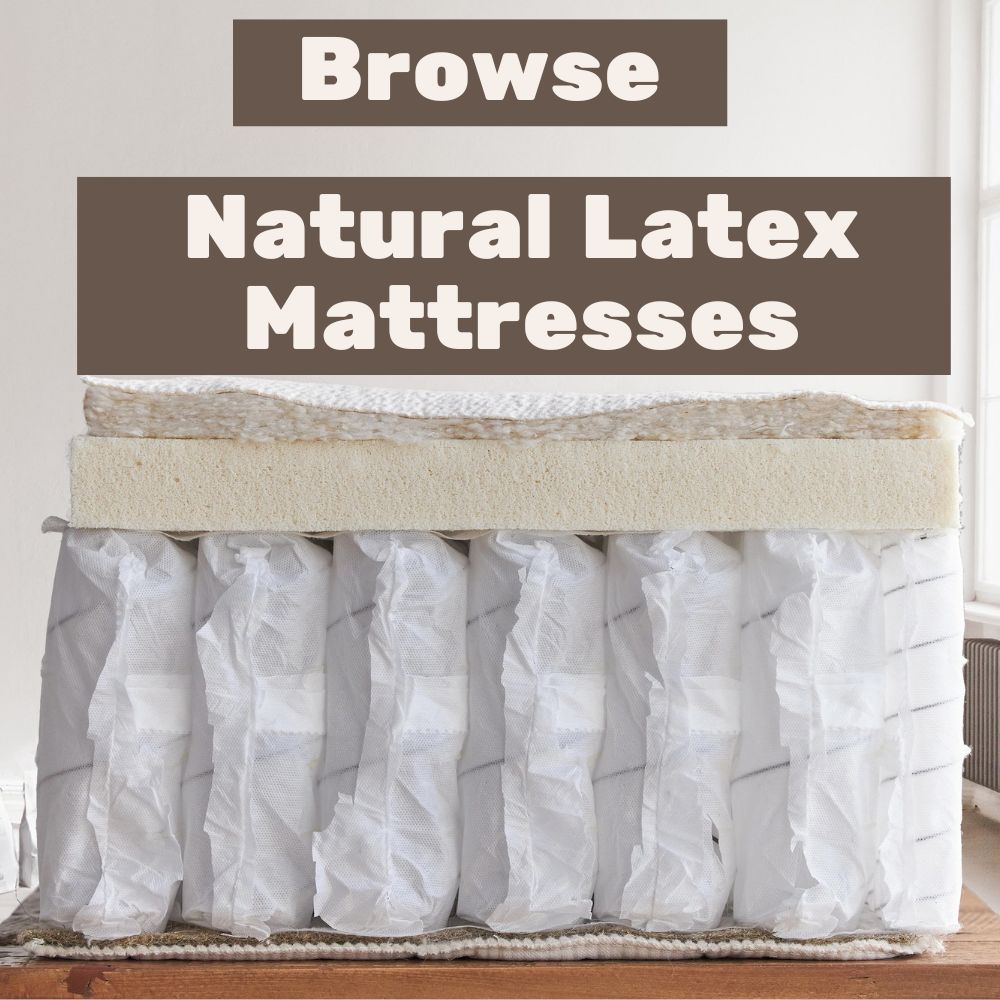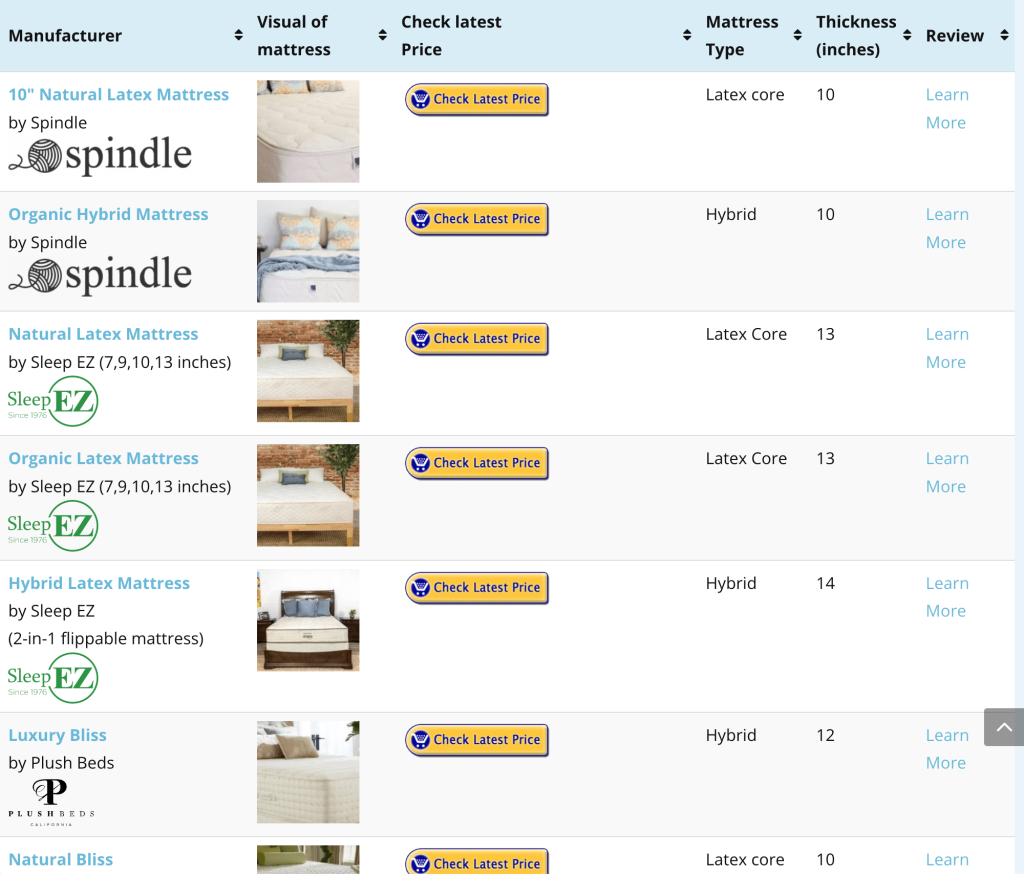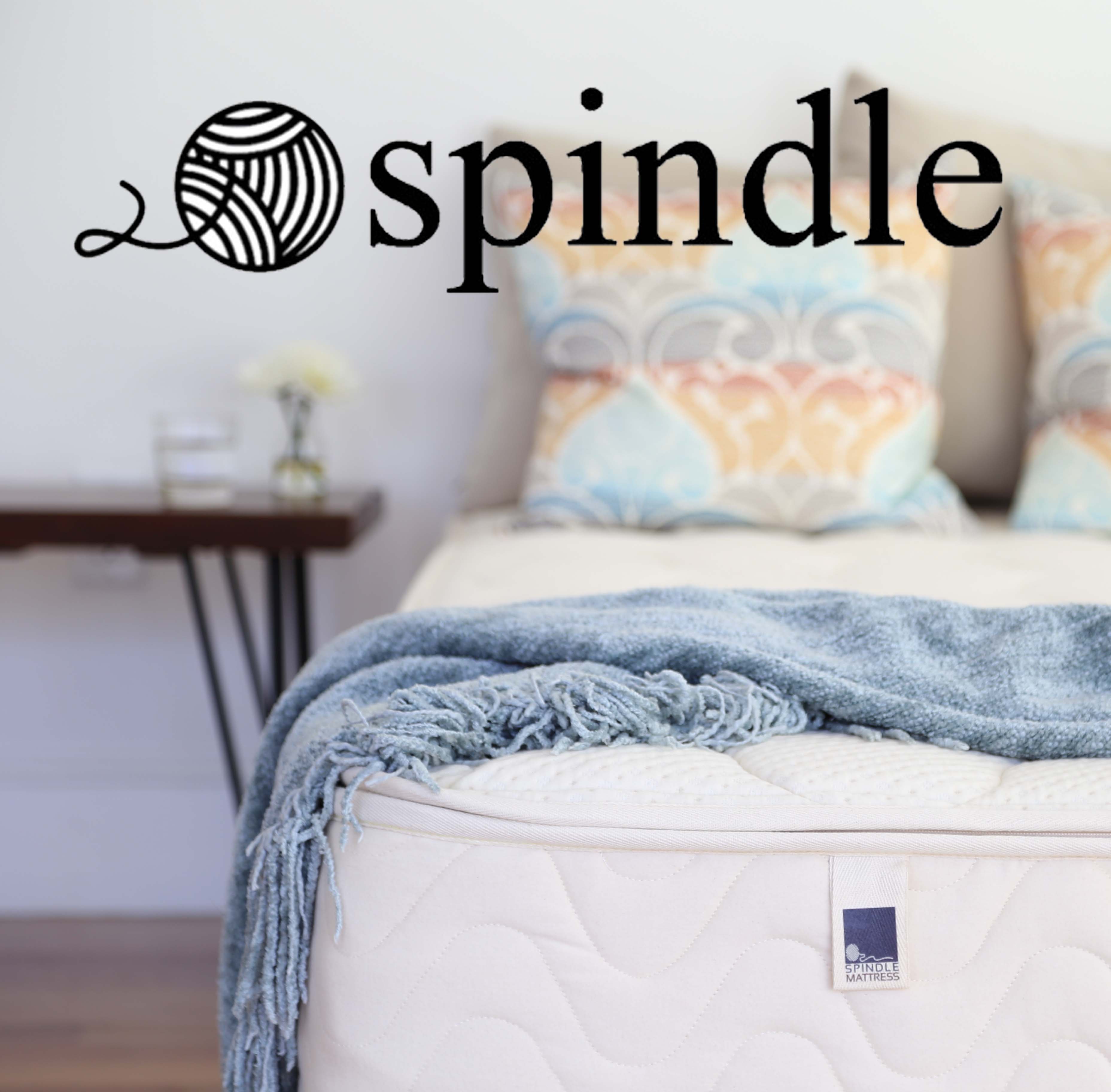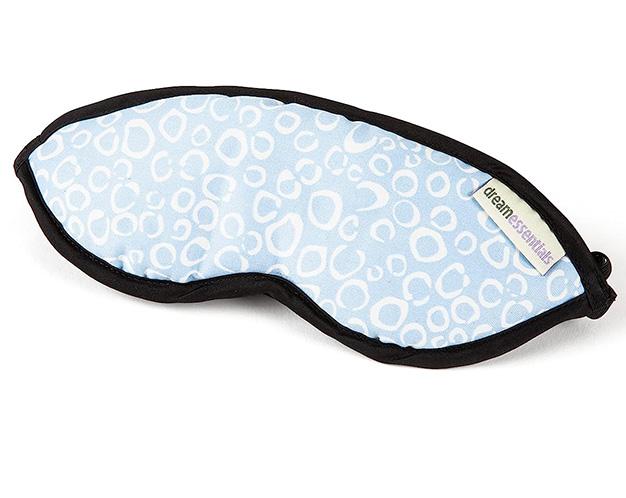Table of Contents
What is the ILD measurement that is used by mattress manufacturers?
ILD (Indentation Load Deflection) is a value that represents the force needed to compress natural latex, polyurethane and several other types of foam. It is used across many industries from mattresses, car seats and furniture.
The ILD measurement value is given to an individual layer of foam and not the entire finished product. In the case of a mattress, it will carry a general firmness rating like soft, medium or firm, while the individual natural latex foam layers within the mattress will have their own ILD rating.
Latex manufacturers like Spindle, Avocado and Brentwood Home will sometimes use Ild for mattress descriptions. In this case, the ILD value only refers to the individual layer within a particular mattress model.
ILD (Indentation Load Deflection)
ILD is a unit of measurement and refers to the number of pounds (lbs) of pressure or force that is needed to indent foam to a depth of 4” by 25%. This test is performed on an area of 50 square inches. The rating is referred to as the ILD rating or the 25% ILD rating.
Specialized Equipment Is Used To Measure ILD and IFD
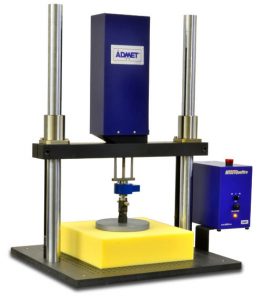
An ILD testing machine ready to test a sample of polyurethane foam. https://www.admet.com
In an ILD mattress foam test, the measuring instrument operates much like a press. The surface area of the indenter is 50 square inches and is circular with 8″ in diameter.
The sample is usually 100mm thick (4-inches) and has a surface area of 500mm X 500mm.
The foam is placed on a flat surface that is perforated. The perforations in the surface allow air to escape the foam as it is being compressed.
The foam is “warmed up” or “strained” before the ILD or IFD test. It is compressed to 75% of its thickness and released again. There is a 6-minute interval between the 75% “strain” compression and the 25% compression that measures the ILD.
A lower ILD score means that the foam is softer or plusher while a higher ILD score means that the mattress is firmer.
In the United States, the ILD measurement is given in pounds-force, while in Europe it is measured in Newtons.
An ILD (IFD) measuring Device in action
In the video below you will be able to see the machine that performs the ILD test in action. The test procedure is as follows:
- The machine pre-flexes the foam before making the final ILD test. The machine will compress the foam twice to 25% of its original thickness at a speed of 4mm/sec.
- There is a 6 minute wait time before the final test begins.
- The foam is then compressed by 25% of its thickness at a rate of 0.83 mm/sec. The force required to compress the foam at a 25% depth is then recorded in Newtons. This value is recorded after 60 seconds of compression.
- The machine then continues to compress the foam to 65% of its thickness at a rate of 0.83mm/sec. The force required to compress the foam at a 65% depth is then recorded in Newtons. This value is recorded after 60 seconds of compression.
*Most manufacturers only use the 25% test when sharing ILD results for natural latex foam.
The Final Results
In the video below, the polyurethane foam is 4-inches in thickness.
The 25% test revealed that the foam had an ILD of 19.1.
The 65% test revealed that the foam had an ILD of 50.3.
The verdict: If we had to attribute a firmness feeling to the polyurethane foam in the video, it would fall into the “plush” category. With an ILD of 19.1 on the 25% test, the foam falls into the “plush” category. You will be able to reference the firmness ranges on the scale below.
Speak English to me, mattress man!

Some descriptive words have been assigned to ranges of values on the ILD scale. This makes it easier for people that don’t feel the need to get too scientific about natural latex foam. Note that an ILD value is only given to an individual layer of foam and not to an entire mattress.
Natural Latex foam is manufactured in the following ranges of ILD. In order to achieve a greater ILD, the latex foam manufacturer makes a denser and heavier foam layer. The higher the ILD, the smaller and fewer the air bubbles the foam will have.
ILD Firmness Guide
- Plush has a range of 16.5 ILD to 22.5 ILD
- Soft has a range of 22.5 ILD to 26.5 ILD
- Medium has a range of 26.5 ILD to 30.5 ILD
- Firm has a range of 30.5 ILD to 34.5 ILD
- Extra-Firm has a range of 34.5 to 38.5 ILD
Most people sleep comfortably on mattresses that have a 25-35 ILD.
An ILD value is objective
The ILD unit of measurement is a fantastic invention because it has enabled the manufacturer to objectively describe the firmness of individual mattress foam layers. With so many factors going into mattress choice like your body weight, height and preferred sleeping position, it is difficult to attribute a firmness description to a mattress (soft, medium, firm).
The ILD scale removes personal opinion from the description of a foam’s firmness and attributes a standardized value to it.
ILD and IFD: Two Different Terms That Mean The Same Thing
Ild which is an acronym for indentation load deflection is also sometimes called Indentation Force Deflection or IFD. ILD and IFD mean the same thing and are interchangeable. However, in the mattress industry, ILD is more commonly used.
A Simplified Mattress Firmness Scale 1 (soft) – 10 (firm)
While ILD represents an amount of force needed to compress foam, it does not give a very good indication of the mattress firmness as a whole to the average consumer. People relate much better to a scale of 1 to 10, which is why some companies rate the firmness of their mattresses on a scale of 1 to 10 while forgoing the ILD measurement entirely.
Mattress manufacturers are aware of the particular ILD of the foam within the mattresses they make, but some wish to not make it public, as the unit of measurement can seem confusing to the average person. The ILD or IFD units of measurement are only used in the polyurethane and natural latex foam manufacturing industries, so it is unlikely that someone that is not working in this industry would quickly relate to the unit of measurement.

Avocado Vegan Mattress is available with an optional pillowtop. On a scale of 1 to 10, the pillowtop has a rating of 6, while the base model has a rating of 7.
A 1-10 firmness rating example
Avocado Green simply rates the entire mattress on a scale of 1 to 10 with 10 being the firmest.
- The Vegan base model by Avocado Green is rated at 7 on a scale of 1-10. They call it a “gentle-firm” and is best suited for back sleepers, stomach sleepers, children and adolescents.
- Vegan Pillowtop model by Avocado Green is rated as a 6 on a scale of 1-10. Avocado says it “offers just the right amount of added luxury and buoyant cushioning”.
ILD is not the only determining factor for firmness
Note that an ILD or IFD value only pertains to the foam layer inside a mattress like the Avocado Green Vegan.
There are a few other components that influence the overall firmness of the mattress: the 5-zone coil layer, wool batting and cover will influence the overall firmness of the mattress.
With this being said, the ILD rating of the foam layers inside a natural latex mattress is a good indicator of the overall mattress firmness.
A Few Real-Life Examples of the ILD Mattress foam rating
The Avocado Natural Latex Mattress
The Avocado mattress company has two models of hybrid natural latex mattresses – the Green Mattress and the Vegan Mattress. Both are hybrid mattresses, which means that a layer made up of spring coils supports a layer of foam and wool fibre.
The Dunlop latex foam in the Green and Vegan models is rated at 14-19 ILD. In the standard model (without the pillowtop), there is a 1-inch Dunlop 14-19 ILD latex foam layer in the base and a 2-inch 14-19 ILD Dunlop latex foam comfort layer that is on top of the coil unit.
Avocado Green Pillowtop model
The pillowtop version of the Avocado Green & Vegan models have an extra 2-inch comfort layer that is also 14-19 ILD.
The overall firmness rating for the Avocado Green & Vegan
The firmness of the other components such as the wool fire barrier, the cotton cover and most importantly the coil unit all contribute to the overall firmness rating of a particular mattress. The Avocado Green & Vegan model is rated as a 7/10 and is described as a medium-firm. The pillowtop model, which has an added 2-inch layer of 14-19 ILD latex foam is rated as a 6/10 and is described as a gentle firm.
The 13-inch pillowtop versions of the Green & Vegan are ideal for side-sleepers, heavy people (230+ pounds) and people that like a luxurious mattress.
The Spindle natural Dunlop latex ILD rating
The Spindle natural mattress company has shared some data regarding the ILD of the individual layers of latex in their mattresses.
The medium Dunlop latex firmness scores a 17.5 – 20.5 at 25% compression and 27-33 at the 40% compression.
The firm Dunlop latex firmness scores a 29.5-32.5 at the 25% compression and 44-54 at the 40% compression.
The Ild firmness rating for each individual Dunlop latex layer can be found in the chart below:
Although this ILD chart gives you a good idea of the firmness of each individual layer, it won’t give you a sense of what the mattress firmness is like as a whole. Spindle uses different configurations of latex layers in order to make the soft, medium, firm and extra-firm mattresses.
The chart below demonstrates how Spindle combines latex layers in order to offer mattresses of different firmnesses:
In the video below, Neil Patten from Spindle demonstrates how latex layers with the same ILD rating can have very different firmnesses. The 100% synthetic latex has a 17.5 to 25.5 ILD at a 25% compression ratio. The Spindle 100% natural Dunlop latex has the same rating: 17.5 to 25.5 ILD at a 25% compression ratio.
The main difference between the two latex layers is that they have different densities. Natural latex will have a higher density than synthetic latex of the same ILD. The pounds per cubic inch is higher in natural latex than it is in synthetic latex. The end result is that weight will sink more into synthetic latex than natural latex. The natural Dunlop will provide more support, pressure-relief and less sinkage than the synthetic latex, even if they have the same ILD rating.
The video below demonstrates what an actual ILD mattress foam test looks like. The test is performed in the following steps:
- The foam is pre-flexed before taking ILD measurements. It is compressed twice to 25% of its original thickness at a speed of 4mm/sec. A 6 minute wait time elapsed before the next compression.
- Then, 4.5 N (Newtons) of force is applied to the foam by the press.
- The foam is compressed to 25% of its thickness at a rate of 0.83 mm/sec. The force is recorded in Newtons after 60 seconds.
- The press continues to compress the foam to 65% of its thickness at a rate of 0.83 mm/sec. The force is recorded in Newtons after 60 seconds.
- The force is recorded after 60 seconds for 25% and 60% compression IFD (Indentation Force Deflection) values.
Here is the sequence of readings on a graph:
An ILD press in action:
What does ILD mean in mattresses?
ILD is an acronym that refers to Indentation Load Deflection. An ILD value can be attributed to any foam component in a mattress whether it be natural latex foam, polyurethane foam, memory foam or gel foam. While the ILD value can be attributed to individual foam mattress components, it cannot be attributed to a mattress as a whole. The ILD value of individual foam components can give you a good idea of what the overall firmness of the mattress is. There are many other factors to consider when evaluating a mattress’s comfort such as the thickness of the foam layer(s), the coil unit and the thickness of the mattress.
What is the best ILD mattress topper rating?
Selecting a topper based on an ILD rating is much more straightforward than for a mattress. A topper is made exclusively of natural latex foam or polyurethane foam so there are no other components aside from a cover that could influence the overall firmness.
For example, the Pure Green Natural Latex Mattress Topper is rated in the following manner soft – 20 ILd.
The Sleep Ez Natural Latex Topper is rated as a medium – ILD 28
Conclusion
The ILD rating is an objective and scientific rating for individual foam layers in a mattress. Although it can give you a good idea of what the layer firmness is, it does not indicate the overall firmness of the mattress. Components like coil units and fibre layers all contribute to the overall firmness rating of the mattress.
Within a mattress, many different components are combined in order to create a comfortable sleep surface. For this reason, mattress manufacturers use the terms soft, medium, medium-firm and firm to describe the firmness of their mattress models. Occasionally, manufacturers will provide a numerical rating where 0 is the softest and 10 is the firmest. Most people will be most comfortable on a mattress with a 6/10 rating.

